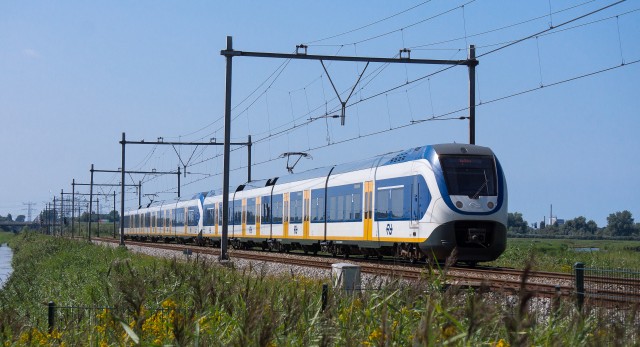The Netherlands is setting the standards on the way electric trains should be operated. Beginning on January 1, 2017, Dutch electric trains are running on 100% renewable energy.
Train operator NS confirmed that the Dutch rail network, which handles 600,000 passengers on a daily basis, have been running on 1.2 billion kilowatt-hours of wind energy as supplied by Eneco since the start of the year.
The deal with Eneco began in 2015 but it was only this year that 100% renewable energy is being used on Dutch electric trains operated by NS, details the Green Car Reports.
The two companies originally planned to transition Dutch electric trains to 100% renewable energy by 2018 but moved up the timetable after achieving 75% renewable energy use last year.
Power from the rail network comes from wind farms not only in The Netherlands but also from Belgium and Scandinavia, according to Eneco.
Eneco explained that sourcing power from multiple countries ensures that there is an adequate amount of electricity for the rail network’s needs at all times.
Striving for clean air
While modern electric cars have only been available in large numbers for a few years, electric trains have been commonplace for some time.
As with electric cars, the source of the electricity used to power these trains impacts their overall carbon footprint. The cleaner an energy source, the cleaner the vehicles it powers.
It is obvious that if the operator taps renewable energy sources, it is as good as protecting the environment from harmful emissions often caused by using traditional power sources including fuel, coal, and the like.
However, there have been some issues with regards to using renewable energy sources, particularly wind energy.
Addressing the intermittent nature of wind
The intermittent nature of many renewable energy sources has led to some concern over what to do when the wind is not blowing or the sun is not shining.
Energy storage systems that use lithium-ion battery packs to store excess power for later use are one solution touted by renewable energy proponents.
The Netherlands currently has 2,200 operable wind turbines, with plans for a large new offshore wind farm as well.
Renewable energy accounted for 4 percent of the country’s generating capacity in 2014, but the Dutch government wants to raise it to 16 percent by 2023.
In addition to the renewable energy initiative, NS is in the process of reducing its overall energy consumption by 2 percent per year, having already achieved a 30 percent reduction from 2005 levels.
While the use of renewable energy to power electric trains is impressive, it does not account for all of the trains operating on the Dutch rail network. A small number of trains used for freight service are still diesel-powered.
In the US, some passenger trains use electric power, but the overall majority of trains use diesel locomotives.
That’s because the greater infrastructure demands of electric trains limit where it is practical to use them.
Electric trains get their power from overhead wires or an electrified third rail, installation costs of which must be factored into any decision to operate them on a given rail line.
A single Dutch Railways line in the Netherlands still runs on diesel fuel, but only until the end of this year. Every other train owned by the national rail company is already electric and now gets that electricity from Dutch wind farms.
Ton Boon, spokesperson for the Dutch Railways or NS, which runs a network of 5,500 trains said that they want to give their commuters and train passengers a real sustainable alternative to flying or driving a car
The company, working in partnership with all other Dutch rail companies, including freight trains, had planned to source all of its electricity from wind by 2018, but after learning that extra wind power was available on the Dutch market, was able to purchase it earlier.
The trains use a huge amount of power, roughly as much as the entire city of Amsterdam. But the growth in wind energy makes it possible to supply the whole amount.
Instead of buying power from existing renewable energy plants, the rail company chose to support newly-built projects. The power is sent into the grid, and the company buys certificates for each megawatt-hour of energy that it uses. Wind power does not go directly to the trains, both because that’s not how the infrastructure is set up and because the trains need to pull from the grid for a constant source of power.
Boon explained that if there is no wind, they can still run the trains. He said that there needs to be enough power on the grid always.
Each day, 1.2 million people ride the trains, compared to less than 90,000 a day on Amtrak in the US.
In 2011, the most recent year that data are available, Amtrak directly emitted nearly 800,000 metric tons of carbon pollution so NS’s operational footprint is close to nothing while running more than 15 times as many trains.
Boon enthused that NS wants to set an example for the market that it’s possible to make an agreement with an energy supplier on making one’s energy usage really sustainable.
